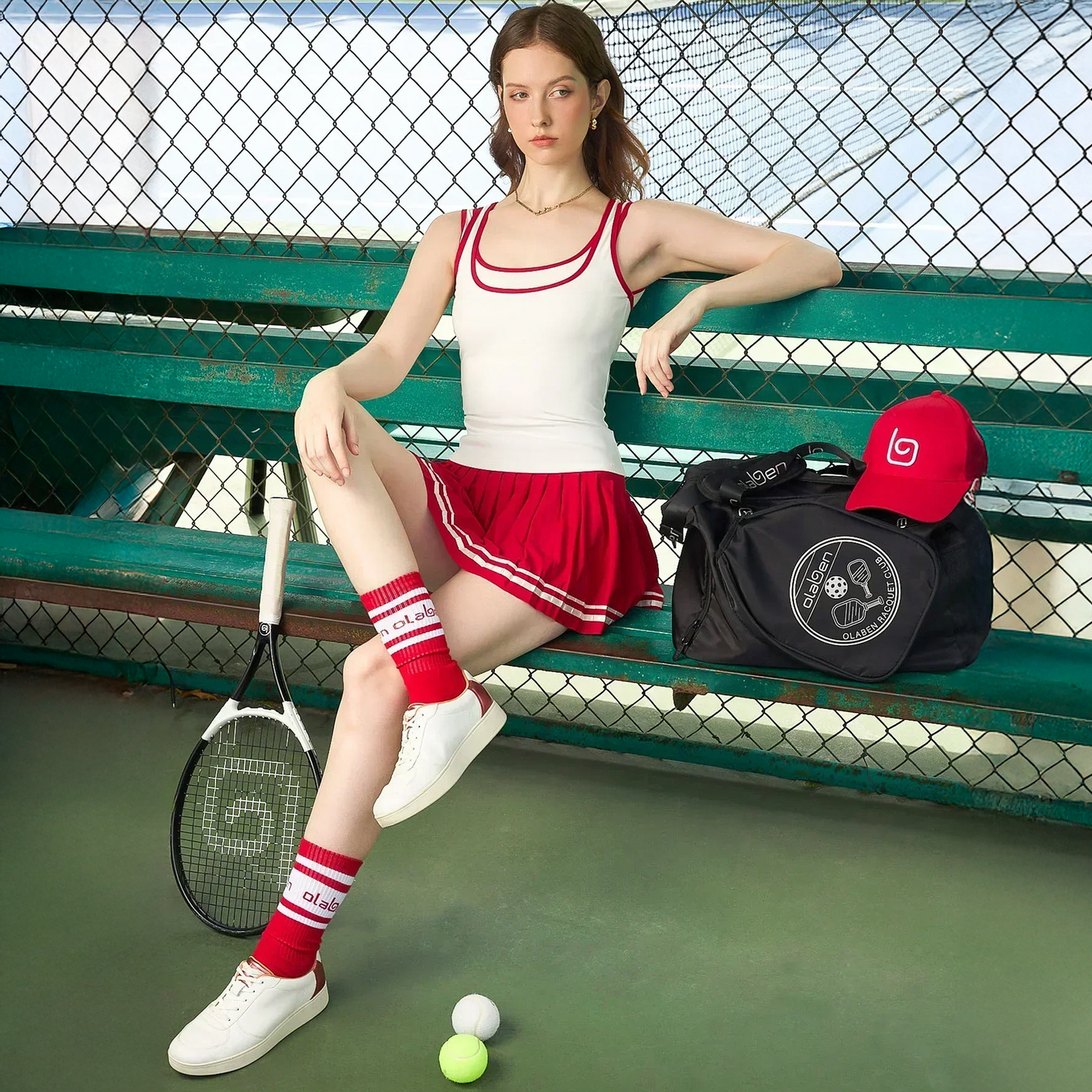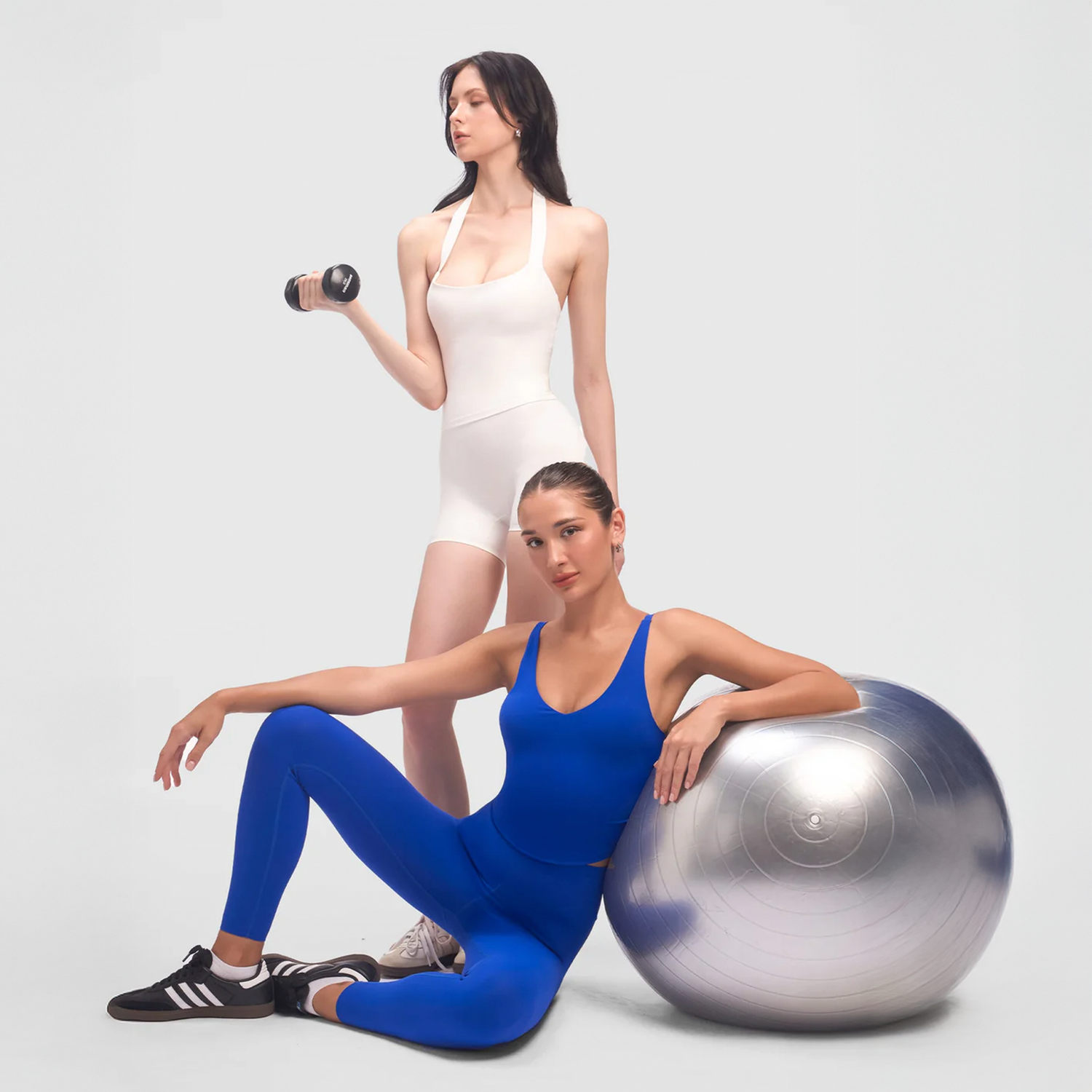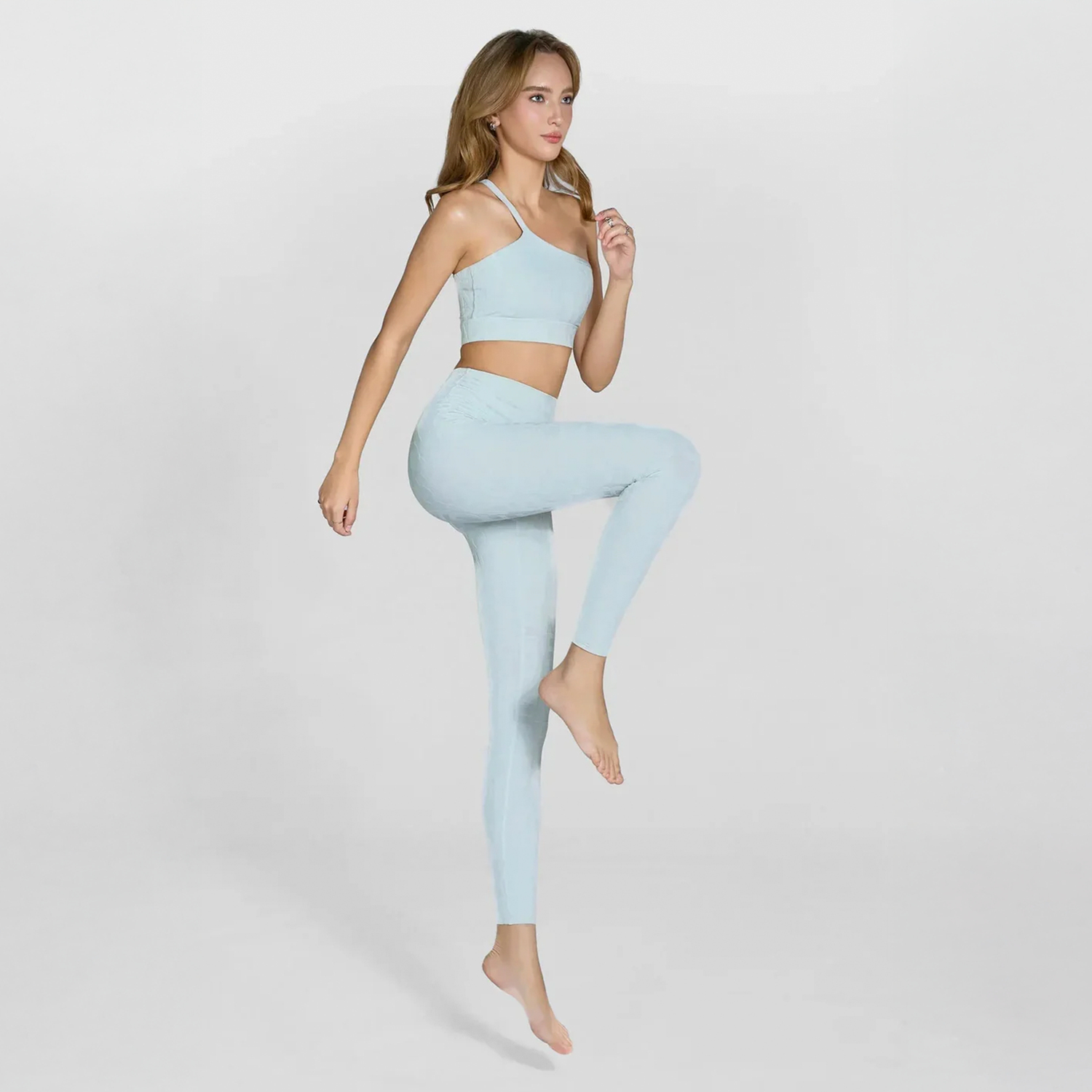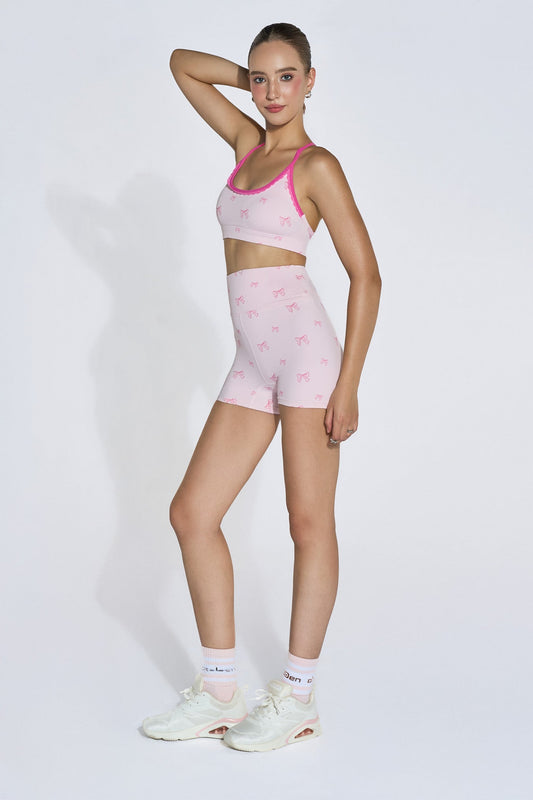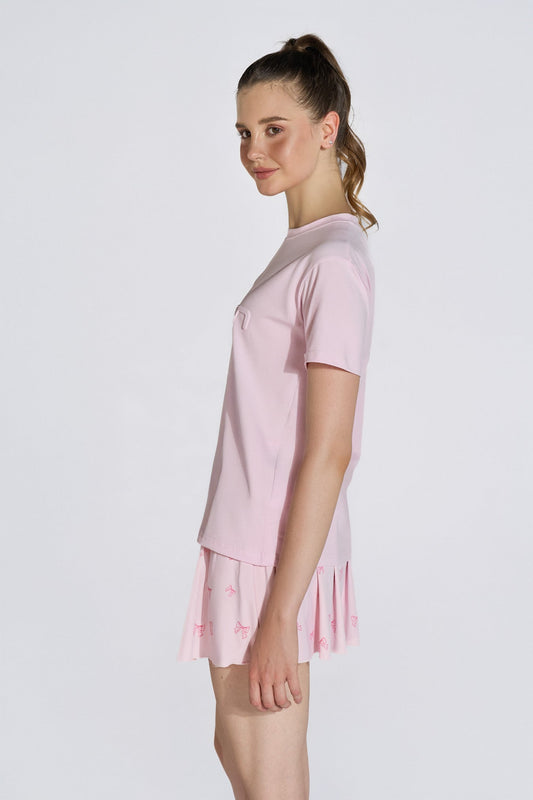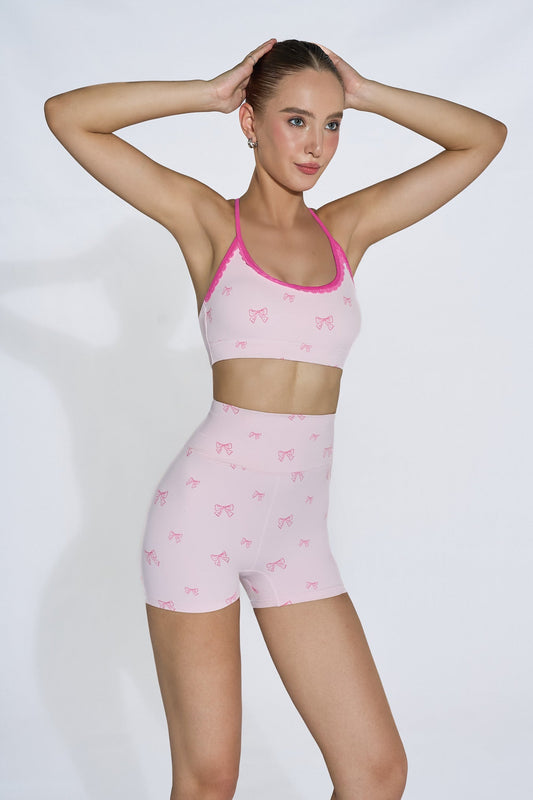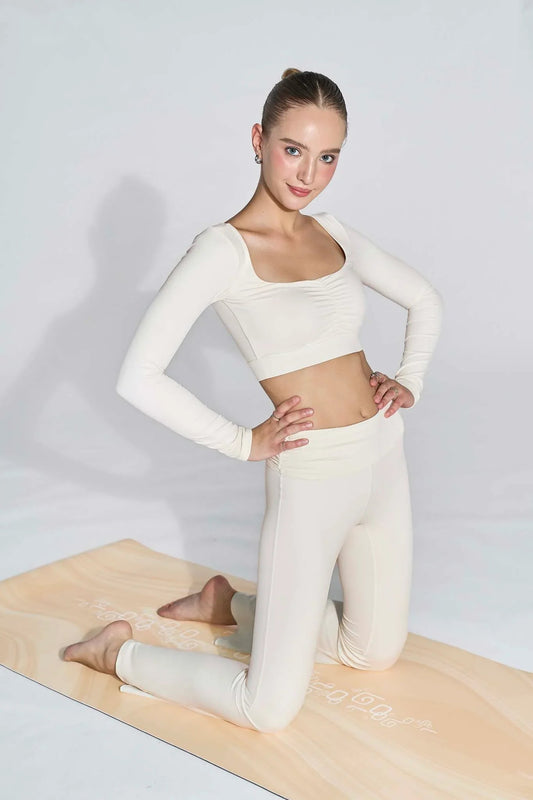Ever wondered what yoga pants are made of and why they feel so comfortable yet supportive? The secret lies in the yoga pants material — a perfect blend of fabrics designed to move with your body while keeping you confident through every pose. Whether you’re a yoga beginner or a seasoned practitioner, choosing the right material can make all the difference in your practice. Let’s dive in with Olaben and explore what makes the perfect pair of yoga pants.
Spandex / Lycra (Elastane)
Spandex — also sold under the trademark Lycra — is the elastic fiber that gives yoga pants their signature stretch and recovery. Lycra is just a brand name for elastane, but functionally they behave the same: high elongation and excellent “bounce back.”
- Typical ratio: most performance leggings use ~10–15% spandex blended with a structural fiber (e.g., polyester or nylon). Example: many Laureate styles use 13% Spandex.
- Performance: extreme stretch (some seamless designs advertise very high stretch percentages — e.g., a Freeleaf seamless legging with a claimed 260% stretch), excellent shape retention, and body-hugging fit. Waistband silicone or panels can add localized extra stretch/hold (example: 300% silicone stretch at the waistband and strong recovery rates).
- Pros: superior mobility (four-way stretch), sleek fit, great for sculpting/athletic styles; resists bagging when properly blended.
- Cons: spandex alone isn’t durable or breathable; it’s heat-sensitive (high heat degrades elasticity) and can yellow with age if not cared for.
- Care tip: cold wash, avoid hot dryers and chlorine; air dry to preserve elasticity.

Polyester
Polyester is a workhorse for yoga wear because it’s light, durable, and wicks sweat away from skin — making it ideal for hot or active classes.
- Typical ratio: performance yoga pants frequently contain 80–90% polyester when polyester is the main fiber (your Laureate flared pants: 87% polyester + 13% spandex).
-
Performance: fast-drying and abrasion-resistant; certain polyester constructions (e.g., ITY knit) add extra drape and stretch but can be tricky to sew or produce.
- Pros: excellent moisture management, low-wrinkle, long-lasting color and structure when blended correctly.
- Cons: less breathable than natural fibers on its own; can trap odors and contribute to microplastic shedding with repeated washes.
- Care tip: machine wash cold, avoid fabric softeners (they reduce wicking), tumble low or air dry.
Nylon
Nylon is prized for a silky handfeel, strength, and an exceptionally smooth finish — often used in tights and premium leggings.
- Typical ratio: nylon blends vary; your Flyleaf style is 69% nylon + 31% spandex, which leans very elastic and second-skin.
- Performance: soft, fast drying, often very opaque even at thin weights; nylon + spandex gives superb four-way stretch and a luxurious fit.
- Pros: soft and durable, excellent for high-performance or form-fitting pieces, good moisture management.
- Cons: can fade or change color over time, may feel slippery for some, and very thin nylon knits are better for light activity rather than heavy-duty workouts.
- Care tip: cold wash, turn inside out, avoid high heat and bleach; skip fabric softeners.

Modal
Modal is a type of rayon made from beech pulp — softer than cotton and more eco-friendly than some synthetics when produced responsibly. Micro-modal is especially plush.
- Typical ratio: modal pieces trend toward high modal content for that soft hand (example: 94% modal + 6% spandex in the Evergreen Modal Flared Pant).
- Performance: excellent drape, very soft against skin, breathable and comfortable for low-impact yoga or lounge wear. Modal holds dye well and resists shrinkage if cared for properly.
- Pros: luxurious feel, breathable, often marketed as a sustainable alternative to conventional rayon or cotton.
- Cons: can require gentler care (hand wash or delicate cycle) and lower spandex content means less compression/support than polyester/spandex blends.
- Care tip: hand wash or cold delicate cycle inside a delicates bag; line dry.
Cotton
Cotton is a natural, breathable fiber that gives a familiar soft, comfortable feel — great for relaxed practice or casual wear.
- Typical ratio: cotton yoga pants are usually blended with elastane to prevent sagging; example: 88% cotton + 12% spandex with a micro-fleece interior for warmth and stretch.
- Performance: very comfortable and breathable; cotton absorbs sweat rather than wicking it, so it can feel heavy when wet. Over time, pure cotton can stretch out or lose its shape if not blended.
- Pros: natural, soft, great for restorative or low-intensity practice and everyday comfort.
- Cons: slower drying, can bag out over time, and less ideal for hot or sweaty classes unless blended with wicking fibers.
- Care tip: cold wash, reshape while damp, avoid high heat drying to reduce shrink/stretch.

Choosing the right yoga pants material isn’t just about style — it’s about finding the perfect balance between comfort, stretch, and performance so you can fully focus on your practice. Now that you know what yoga pants are made of, you can confidently pick fabrics that match your needs — whether you love high-intensity workouts, restorative yoga, or simply lounging in style.
Ready to experience the Olaben difference? Discover our curated yoga apparel collections, designed to support every body and every practice:
- Women’s Leggings Collection – high-rise, sculpting leggings built for yoga, gym, and beyond.
- Women’s Trousers & Pants Collection – versatile, comfortable trousers made for studio-to-street style.
- Women’s Yoga Collection – complete yoga outfits designed to move with you, from flow to meditation.
Find your perfect fit and elevate your yoga journey with Olaben.


